Introduction
How To Build A Cage For Guinea Pigs: Guinea pigs are delightful and gentle pets that bring joy to many households. To ensure the well-being of these furry friends, providing them with a safe and comfortable living environment is paramount. One essential component of their habitat is a sturdy and well-designed cage. Whether you’re a seasoned guinea pig owner looking to upgrade their current setup or a novice embarking on the exciting journey of guinea pig ownership, knowing how to build a cage for guinea pigs is a valuable skill.
Creating a custom cage for your guinea pigs not only ensures their comfort but also allows you to tailor their living space to meet their specific needs. It’s an opportunity to get creative and design an environment where your furry companions can thrive. The process may seem daunting at first, but with the right guidance, materials, and a bit of patience, you’ll be able to construct a guinea pig cage that enhances their quality of life.
We will cover everything from selecting the right materials and measurements to designing an enriching layout and addressing essential safety considerations. Building a cage for guinea pigs is not just a practical endeavor but also a way to strengthen the bond between you and your adorable pet.
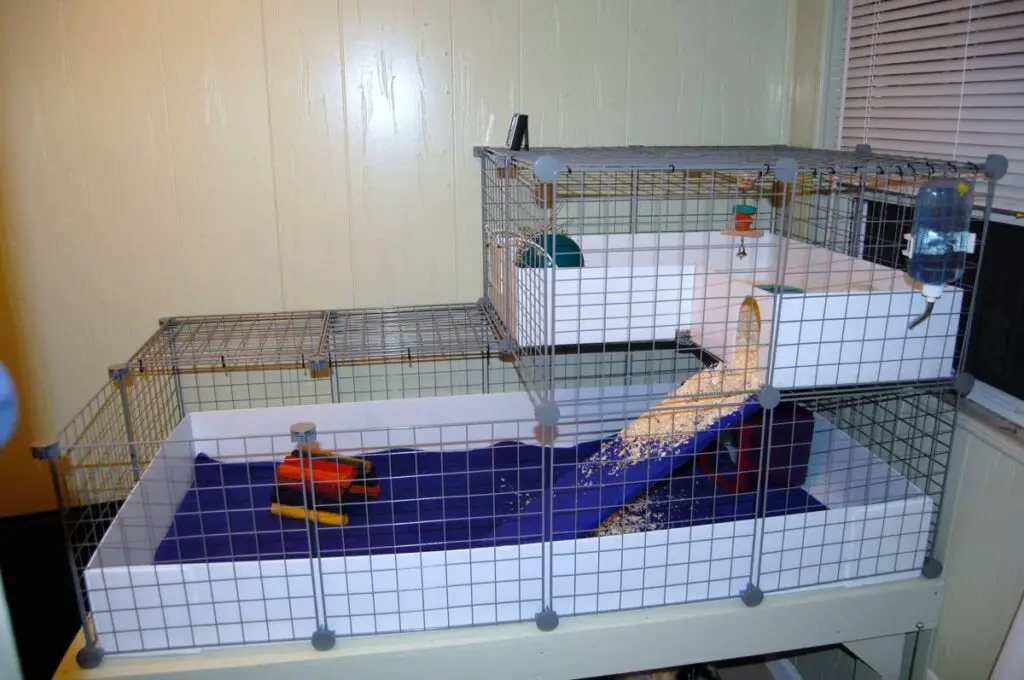
What can I use to make a guinea pig cage?
Build a Guinea Pig Cage With EASY Cleaning
- 1X2 pine.
- 1×4 pine.
- 1/8″ plywood.
- 10 feet of 24″ wire screen.
- 24″ x 36″ plexiglass.
- wood glue.
Steps to Build
- Start by constructing the frame using the 1×2 pine. Create a rectangular frame with the dimensions you desire for your guinea pig cage.
- Attach the 1×4 pine as additional supports, both horizontally and vertically, to strengthen the frame.
- Secure the 1/8″ plywood to the top of the frame to create a solid base for your guinea pigs. Ensure it’s securely attached to the frame.
- Cut the wire screen to the appropriate dimensions for the sides and top of the cage. Attach it to the frame using staples or screws, making sure it’s secure and that there are no sharp edges that could harm your guinea pigs.
- If you want a clear viewing panel, cut the plexiglass to size and attach it securely to one side or the front of the cage frame, allowing you to observe your guinea pigs easily.
- Ensure that all edges are sanded or smoothed to prevent any splinters or sharp edges that could harm your pets.
- Add a door or access point to the cage that allows you to easily reach inside for cleaning and feeding. You can use hinges and latches for this purpose.
- Finish the wood surfaces with a pet-safe, non-toxic sealant or paint to protect them and make cleaning easier.
To clean the cage regularly to maintain a healthy and comfortable environment for your guinea pigs. Providing proper bedding, food, and water inside the cage is essential for their well-being. This DIY cage design allows for easy access and cleaning, making it a convenient option for both you and your pets.
What is the cheapest way to line a guinea pig cage?
Fleece liners are economical: they can help you save hundreds of pounds over the years. They are much easier to clean and create no mess in the house in contrast to wood shavings. They are also comfortable for your guinea pigs as they adore fleece Cage liners and are also eco-friendly since they are reusable.
Materials Needed
Fleece Fabric: You can purchase fleece fabric from a fabric store or online. Look for sales or discounts to save even more money. Consider buying several pieces so you can switch them out during cleaning.
Absorbent Layer: You’ll need an absorbent layer to go beneath the fleece. This can be old towels, U-Haul furniture pads, or reusable incontinence bed pads, which can often be found at thrift stores.
Scissors: To cut the fleece and absorbent layer to the size of your cage.
Steps
Measure and Cut: Measure the inside dimensions of your guinea pig cage and cut the fleece and absorbent layer to fit. Leave a little extra to fold up the sides to help contain any mess.
Layer the Materials: Place the absorbent layer on the bottom of the cage, and then place the fleece on top of it. Smooth out any wrinkles or folds to ensure a flat surface.
Secure in Place: You can use small clips or binder clips along the edges of the fleece to keep it in place. Make sure it’s secure so your guinea pigs can’t easily dig underneath.
Regular Cleaning: Fleece liners are easy to clean. Shake off any loose hay or debris daily, and do a more thorough cleaning 1-2 times a week, depending on your guinea pigs’ habits and the size of your cage.
Wash and Reuse: When it’s time for a deeper clean, remove the fleece liner and absorbent layer. Shake off any loose debris outside, then throw them in the washing machine. Use a pet-safe detergent without fabric softeners, as these can affect the wicking properties of the fleece.
Dry and Reassemble: After washing, tumble dry the fleece and absorbent layer. Once dry, reassemble them in the cage.
What not to put in a guinea pig cage?
Guinea pigs like to chew on everything and if you use materials like metal or plastic, they can hurt their teeth or accidentally ingest it.
Guinea pigs are indeed prone to chewing on various items, and it’s crucial to be mindful of what you put in their cage to ensure their safety and well-being.
Wire Flooring: Wire flooring can harm a guinea pig’s sensitive feet and cause painful conditions like bumblefoot. It’s best to provide a solid, non-slip surface for them.
Plastic Toys with Small Parts: Small plastic toys or parts can be ingested by guinea pigs and pose a choking hazard. Ensure that any plastic toys or objects are safe and large enough that they can’t be swallowed.
Unsafe Bedding: Avoid using cedar or pine shavings, as they can emit harmful aromatic oils that can be detrimental to guinea pig health. Opt for safe bedding materials like fleece or paper-based bedding.
Sharp Objects: Any sharp or pointed objects can cause injuries to your guinea pigs. Make sure there are no sharp edges on cage accessories or decorations.
Chemical-Treated Wood: Wood items in the cage should be untreated and safe for guinea pigs to chew on. Avoid wood that has been treated with chemicals or paints.
Toxic Plants: Guinea pigs may nibble on plants in their environment, so make sure there are no toxic plants in or around their cage. Some common household plants can be poisonous to them.
Metal Grates or Bars: Metal grates or bars can damage guinea pigs’ teeth if they try to chew on them. Ensure that any metal components in the cage are well-protected or out of reach.
Unsafe Fabrics: Avoid using fabrics with loose threads or loops, as guinea pigs may get their feet or teeth caught in them. Fleece liners are a safe fabric choice as long as they don’t have loose threads.
Can you put cardboard in the bottom of a guinea pig cage?
As you know, your guinea pig is an herbivore, this means that they’re eating plant based foods, and they’re able to eat plant-based materials. This means that cardboard is perfectly safe for them to eat, since they’re made of paper.
Yes, you can use cardboard in the bottom of a guinea pig cage as a part of their bedding or as a way to protect the cage floor. Guinea pigs are herbivores, and cardboard is generally safe for them to have in their cage because it’s made of paper and doesn’t contain any toxic materials.
Chewing: Guinea pigs are known to chew on cardboard, and this can be a form of entertainment for them. While cardboard is generally safe for them to chew on, be prepared for them to potentially shred and nibble it. Replace it as needed to ensure they don’t ingest too much.
Absorbency: Cardboard is not as absorbent as some other bedding materials, so it may not be the best choice for the primary bedding in the cage, especially if your guinea pigs are particularly messy. It can be used in conjunction with other bedding materials to provide extra insulation and comfort.
Cleanliness: Guinea pigs can be messy, and cardboard may become soiled quickly. You’ll need to monitor the cardboard for wet spots and replace it when necessary to maintain a clean and odor-free environment.
Safety: Make sure there are no adhesives, tape, or stickers on the cardboard, as these could contain harmful chemicals. Plain, unadulterated cardboard is the safest option.
Can guinea pigs live alone?
Guinea pigs are highly social in the wild; they live in close family groups of 5-10 guinea pigs, though several groups may live in close proximity to form a colony. Guinea pigs get lonely and shouldn’t be kept alone – they’re happiest in pairs.
Guinea pigs are indeed highly social animals, and they thrive when they have the companionship of their own kind. In the wild, they live in close-knit family groups, and this social structure is an essential part of their natural behavior.
It is generally not recommended to keep a guinea pig alone because they can become lonely, stressed, and even depressed when isolated. Loneliness can have a detrimental impact on their well-being, leading to issues like reduced activity, poor appetite, and a decreased quality of life.
Ideally, guinea pigs should be kept in pairs or small groups of the same sex to ensure they have the opportunity to socialize, communicate, and engage in their natural behaviors. A bonded pair of guinea pigs can provide each other with companionship, grooming, and play, which contributes to their overall happiness and mental stimulation.
If you have a single guinea pig and are considering getting another one, it’s essential to follow proper introduction procedures to ensure they get along. Not all guinea pigs will automatically bond, so patience and careful monitoring during the introduction process are crucial.
In summary, guinea pigs are social animals that thrive in the company of their own kind. Their well-being and happiness, it’s advisable to keep them in pairs or small groups rather than alone.
What is the best base for a guinea pig cage?
The main bedding substrate options for guinea pigs include fleece cage liners, cloth, paper and wood shavings. Fleece cage liners: These are fast becoming a very popular option especially for indoor housed guinea pigs. Not all fleece liners are the same.
The best base for a guinea pig cage can vary depending on your specific preferences, the setup of your cage, and your guinea pigs’ needs.
Fleece Cage Liners: Fleece cage liners are becoming increasingly popular for indoor guinea pig cages. They offer several advantages, including ease of cleaning and a soft surface for guinea pigs to walk on. Fleece liners are reusable and can save you money on bedding materials over time. To use fleece effectively, place an absorbent layer beneath it to wick away moisture. Regular maintenance involves daily spot cleaning and weekly washing.
Cloth Bedding: Similar to fleece liners, cloth bedding can be used as a comfortable and reusable cage base. Ensure it has an absorbent layer beneath it to prevent moisture buildup. Regular cleaning is necessary to maintain a clean and odor-free environment.
Paper-Based Bedding: Paper-based bedding, such as aspen or paper pellet bedding, is a popular choice for guinea pig cages. It’s highly absorbent, helps control odor, and is relatively inexpensive. Avoid cedar or pine shavings, as these can emit harmful aromatic oils.
Wood Shavings: Some guinea pig owners use wood shavings, like aspen shavings, as bedding. It’s essential to choose dust-free and kiln-dried shavings to prevent respiratory issues. Wood shavings provide a comfortable surface but may need more frequent replacement due to odor.
Can you build your own guinea pig cage?
DIY Guinea Pig Cage Alternative
Though pet stores do sell large-sized cages, these will usually be the absolute minimum size for your guinea pig, if not too small. And one thing is always true and they will be expensive.
Yes, you can absolutely build your own guinea pig cage, and it can be a cost-effective and rewarding DIY project. Building a custom guinea pig cage allows you to create a spacious and comfortable environment tailored to your pets’ needs.
Materials You’ll Need
Cage Frame: You can use materials like PVC pipes, wire cube grids, or wooden frames to create the cage structure. The choice depends on your preferences and budget.
Wire Mesh: Select a wire mesh with small enough gaps to prevent your guinea pigs from escaping. Ensure it’s safe for them to walk on.
Coroplast or Plywood: This is used for the base of the cage. Coroplast is often preferred due to its durability and ease of cleaning.
Connectors and Fasteners: You’ll need connectors, cable ties, clips, or screws to secure the frame and wire mesh.
Cutting and Measuring Tools: You’ll need tools like a saw, wire cutters, and a tape measure to cut and assemble the materials accurately.
Where should you not place a guinea pig cage and why?
For sanitary reasons, don’t keep your guinea pig’s cage in your kitchen or other area where food is prepared. Make sure your guinea pig’s cage is safe from other pets who may see them as prey. If you have young children, put the cage in an area where you can control access and supervise child-guinea pig interactions.
Kitchen or Food Preparation Areas: Avoid placing the guinea pig’s cage in the kitchen or any area where food is prepared. This is primarily for sanitary reasons, as guinea pigs can produce waste that can carry bacteria and odors. Keeping their cage separate from food preparation areas helps maintain cleanliness and reduces the risk of cross-contamination.
Areas Prone to Drafts or Extreme Temperatures: Guinea pigs are sensitive to temperature fluctuations. Avoid placing their cage near drafty windows, doors, or vents, as exposure to cold drafts can lead to health issues like respiratory infections. Likewise, avoid direct sunlight and areas that may become excessively hot during the day.
High-Traffic or Noisy Areas: Guinea pigs are generally timid animals, and constant noise and foot traffic can stress them out. Avoid placing their cage in areas where there’s a lot of noise, such as near loud appliances, television sets, or busy hallways. A quiet and relatively calm environment is ideal for their well-being.
Inaccessible or Unsupervised Areas with Children or Other Pets: Guinea pigs should be kept in a location where you can easily supervise interactions with children or other pets. Guinea pigs are small animals, and some pets, like dogs and cats, may view them as prey. It’s essential to ensure their safety by keeping their cage in an area where you can control access and provide protection.
Humid or Damp Areas: Guinea pigs are sensitive to humidity and moisture. Avoid placing their cage in areas prone to dampness or high humidity levels, as this can lead to health issues like fungal infections and skin problems. Proper ventilation and climate control are essential.
Directly on the Floor: Placing the cage directly on the floor can make it easier for drafts, dust, and potential hazards to affect your guinea pigs. Elevating the cage slightly, using a stand or table designed for small animal cages, can help maintain a more controlled and safe environment.
In summary, selecting the right location for your guinea pig’s cage is crucial for their comfort, health, and safety. Choose a quiet, controlled environment away from food preparation areas, drafts, extreme temperatures, and potential hazards from other pets or children. This will help ensure that your guinea pigs can thrive in a secure and comfortable living space.
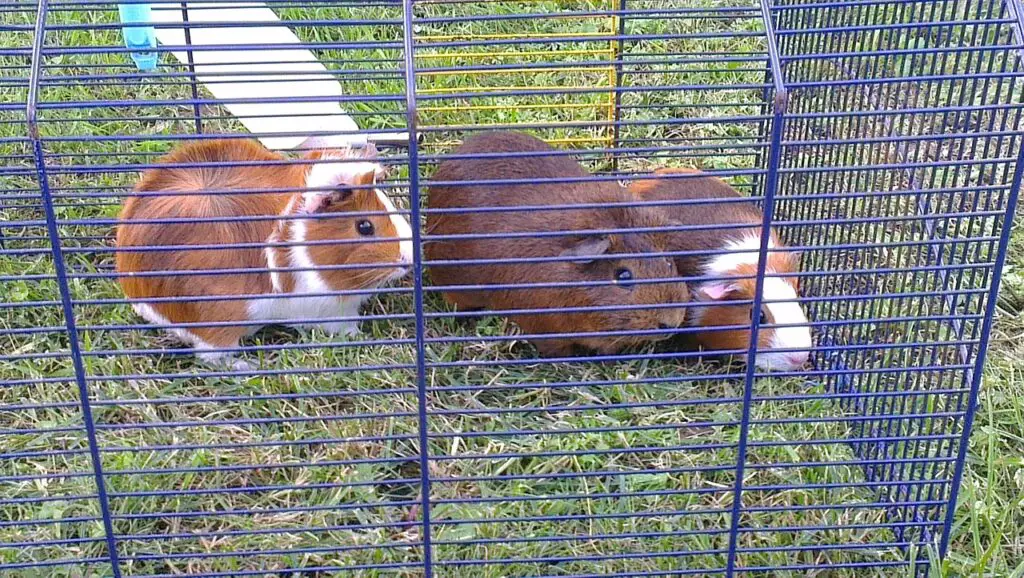
Conclusion
Building a cage for guinea pigs is a fulfilling and rewarding endeavor that directly contributes to the well-being of these charming and social pets. By taking the time to design and construct a safe, comfortable, and stimulating living space, you’re not only ensuring their physical health but also fostering a nurturing environment for your guinea pigs to thrive emotionally.
Throughout this guide, we’ve explored the crucial steps and considerations involved in crafting the perfect guinea pig enclosure. From selecting appropriate materials and measurements to incorporating enriching features and addressing safety concerns, you’ve gained the knowledge necessary to create a habitat that caters to your guinea pigs’ unique needs.
Building a guinea pig cage is a labor of love. It’s an opportunity to bond with your pets and provide them with a cozy sanctuary they can call home. So, take your time, get creative, and enjoy the process of constructing a space where your guinea pigs can lead happy, healthy lives for years to come. Your efforts will undoubtedly be rewarded with the joyful squeaks and playful antics of your beloved furry companions.

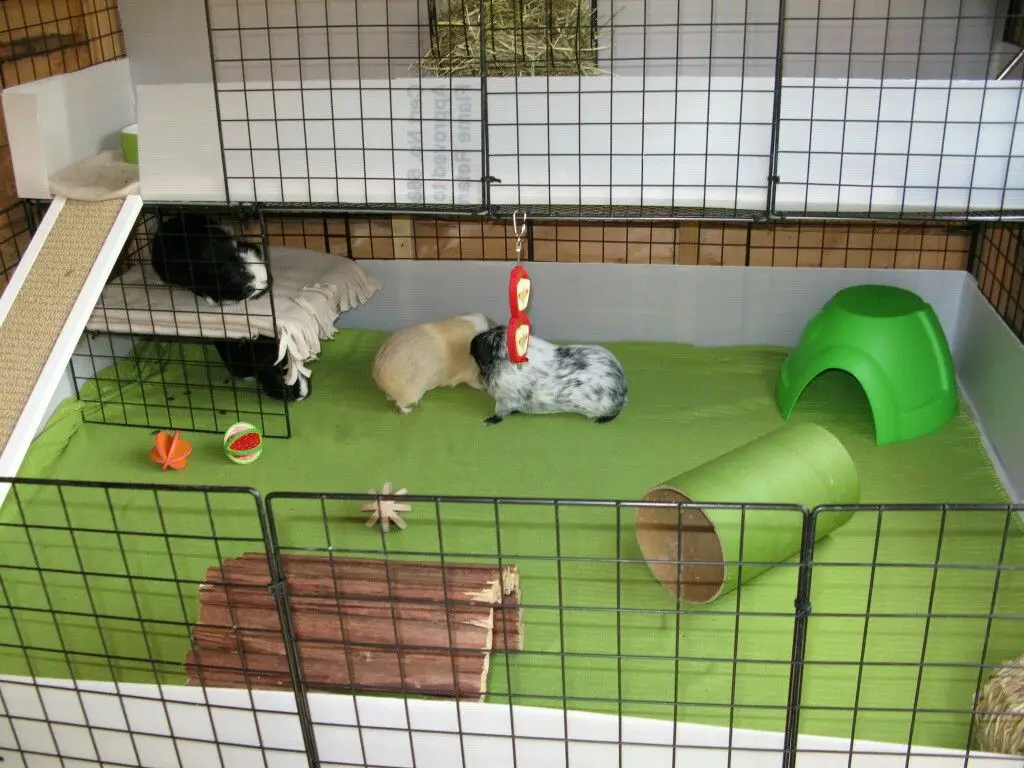
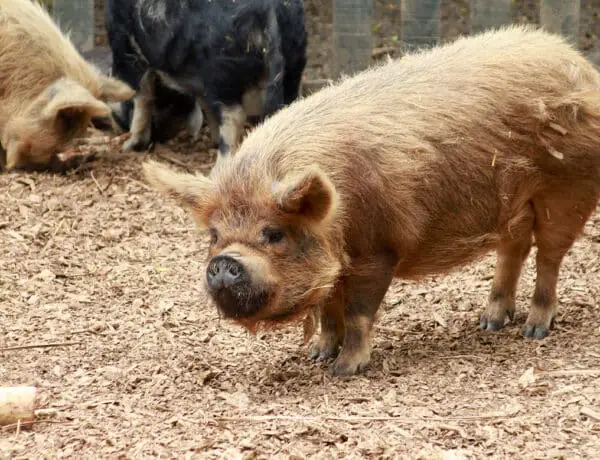
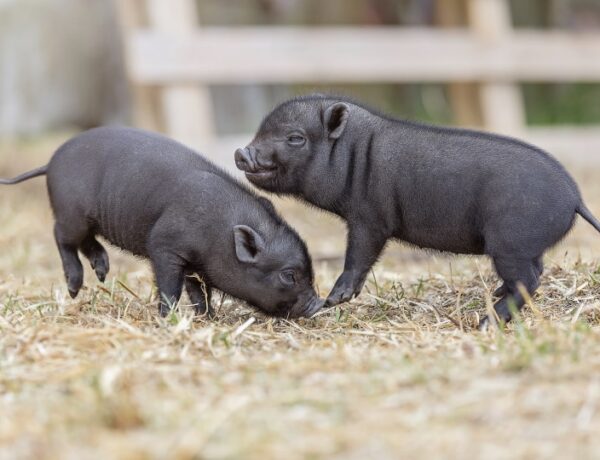
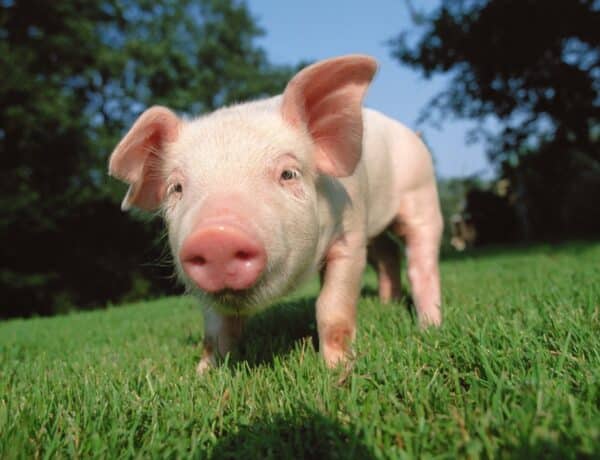
No Comments